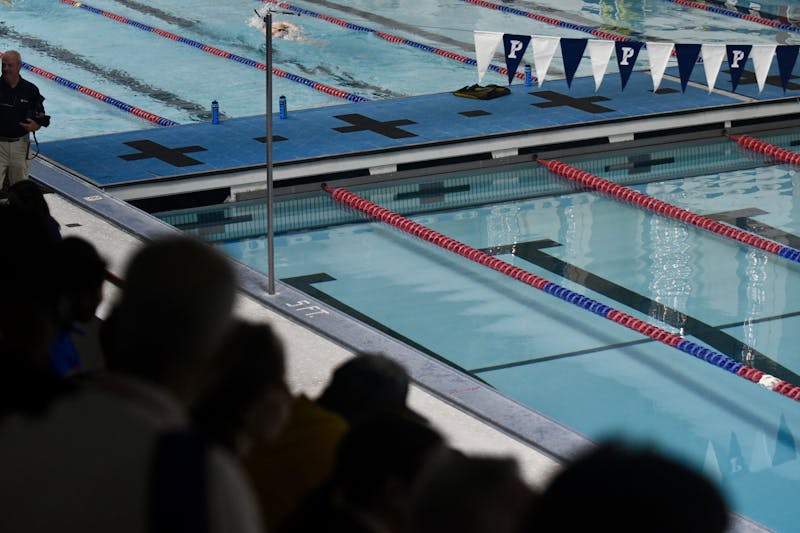In the 20 years that U.S. News and World Report has published its annual college rankings, the publication has certainly faced its share of criticism. College and university administrators have questioned the study's evaluation criteria, and higher education experts have speculated about the validity of the magazine's methodologies.
But for the typical high school senior struggling to narrow down a list of college choices, the magazine's annual rankings play a crucial role -- for better or for worse.
In the magazine's 2003 rankings, released online last week, Penn tied with four other universities for the number four spot -- its highest rating ever. The University placed fifth last year after breaking into the top ten in 1997. While this consistent ascent is a definite plus for the University, its actual impact is hard to quantify.
"There's no doubt that it does have some effect," Admissions Dean Lee Stetson said. "It raises our visibility. It places us in elite company."
Stetson said Penn's placement near the top of the rankings has helped keep the University in the front of prospective students' minds in recent years.
"I think it just means more students may explore Penn as an option," Stetson said.
University President Judith Rodin echoed Stetson, saying that "the top group of schools definitely gets a closer look than the others by the best students."
"I think students are savvy consumers, but I do think that the categories of the schools they look at... is influenced by the rankings," Rodin said. "It undoubtedly has a real effect, whether or not we think the variables that are all included in the rankings are the best ones."
After Penn's rise to the number five spot in last year's rankings, the University's overall admissions rate dropped from 22 to 21 percent and the regular decision admission rate hit an all-time low of 16 percent, according to Stetson. There was also an increase in the average SAT score of accepted students and a 4 percent jump in the number of accepted students who chose to enroll.
But administrators said it is hard to determine exactly how strong the relationship is between Penn's rising U.S. News status and these numbers. Instead, they agreed, it is Penn's presence near the top of the list -- rather than its exact ranking -- that seems to provoke student interest.
"I think that going up into that top cohort, whether it was six or five or four, is really what's important," Rodin said. "Being in that top group, which Penn deservedly is, I think matters to our applicants... I don't think where specifically we are has made an enormous difference."
Stetson noted an instance last year in which a Penn admissions officer visited a San Francisco high school to discover that the majority of the students present had developed an interest in Penn based on its U.S. News placement.
"Half of the audience said it was because they wanted to find out more about the school that was tied with Stanford and [the Massachusetts Institute of Technology]," Stetson said. "I think that what [the ranking] does do is allows students to explore us further."
But despite the rankings' effect on prospective students, Penn's annual fluctuation in the rankings doesn't seem to be a an issue for faculty members, according to Rodin.
"I don't think that the faculty is very influenced by the U.S. News rankings except by the fact that if it has any contribution to attracting better students, then obviously the faculty always wishes to have the brightest... students," Rodin said. But, she added, faculty are not affected "in an absolute sense."
School of Arts and Sciences Dean Samuel Preston agreed, calling the rise in ranking "a small net asset" for the University but not a "major factor" in attracting faculty members.
"Faculty do look at the quality of student... but I don't think anybody pays a great deal of attention to the U.S. News and World Report rankings because I don't think they're a good reflection on the quality of students," Preston said. "What worries me is next year we're tenth and is anything really materially going to have changed? No."
"I think the week that they come out, people pay [more] attention to them," Preston added. "The other 51 weeks of the year, we go about our business of trying to become a better university."
Rodin said that although Penn's climb in the rankings may please alumni, it doesn't necessarily mean more donations or more successful fundraising.
"I do think it affects alumni pride as well," Rodin said. "I don't think it affects giving as much as pride... it's not a perfect correlation by any means."
"The rankings have more effect the further you are away from the University," Rodin added, noting that Penn's rating is more likely to influence "international alumni and applicants and those who aren't as intimately knowledgeable" about the University.
Still, Stetson is hopeful that Penn's steady rise in the U.S. News rankings in recent years will have an impact on this year's admissions numbers.
"Early indications are that we are seeing more interest and have been all during the spring and summer of the year based on last year's position as well as out general visibility," Stetson said. He noted that after last year's rankings were released, there was a 15 to 20 percent increase in on-campus visitors.
The Daily Pennsylvanian is an independent, student-run newspaper. Please consider making a donation to support the coverage that shapes the University. Your generosity ensures a future of strong journalism at Penn.
DonatePlease note All comments are eligible for publication in The Daily Pennsylvanian.







